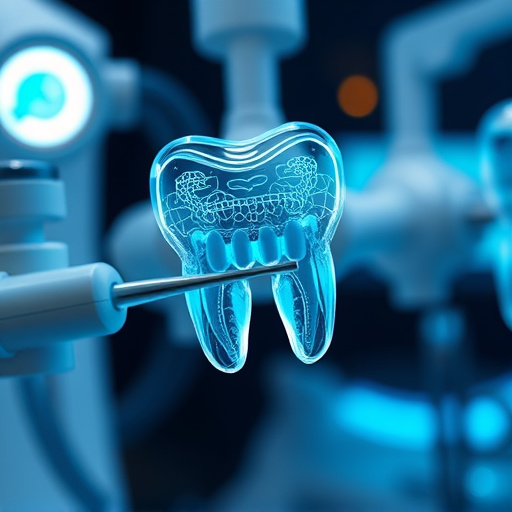Epidural injections are a safe and effective herniated disc treatment option, offering targeted pain and inflammation relief by directly injecting medication into the epidural space around affected nerves. This non-surgical procedure provides immediate and long-term benefits, complementing conservative methods like spinal adjustments for comprehensive herniated disc care. While mild side effects are possible, rare complications are unlikely, and swift recovery is typical with proper post-treatment care, including rest and exercises, especially crucial for whiplash treatment.
“Discover the transformative potential of epidural injections in managing herniated discs. This comprehensive guide delves into the world of minimally invasive procedures, offering a detailed understanding of epidural injections and their role in alleviating disc-related pain.
We explore the science behind this treatment, explaining how it targets specific areas affected by herniated discs. From benefits and risks to the recovery process, patients seeking effective herniated disc treatment will find invaluable insights to make informed decisions.”
- Understanding Epidural Injections: A Comprehensive Overview
- How Epidural Injections Treat Herniated Discs
- Benefits, Risks, and Recovery Process: What Patients Need to Know
Understanding Epidural Injections: A Comprehensive Overview

Epidural injections are a minimally invasive procedure that plays a significant role in herniated disc treatment. This technique involves injecting medicine directly into the space around your spinal cord, known as the epidural space. The goal is to reduce pain and inflammation caused by a herniated or bulging disc pressing on nearby nerves. By delivering anti-inflammatory drugs and anesthetics, these injections can provide pinched nerve relief and help patients manage their symptoms effectively.
Understanding Epidural Injections as part of herniated disc treatment involves comprehending its mechanism in alleviating pain. The process begins with a detailed assessment to determine the exact location of the affected area. A healthcare professional will then guide thin needles through specific points in the back, targeting the epidural space. Once in place, medication is injected, which can include corticosteroids known for their anti-inflammatory properties, along with local anesthetics for immediate pain relief. Personalized treatment plans often incorporate epidural injections alongside other conservative methods such as spinal adjustments to offer comprehensive care for herniated disc conditions.
How Epidural Injections Treat Herniated Discs

Epidural injections are a non-surgical treatment option for herniated discs, focusing on relieving pain and inflammation surrounding the affected area. This procedure involves injecting medicine directly into the space around the spinal nerves, known as the epidural space. The injected corticosteroids help reduce swelling and irritation, providing significant pain relief for patients suffering from disc-related conditions. By targeting the specific region of the spine where the herniated disc is causing discomfort, these injections offer a targeted approach to managing joint pain.
In addition to pain management, epidural injections can also facilitate rehab services by improving mobility and flexibility. The reduced inflammation allows for better nerve function, which in turn can speed up the healing process. This non-invasive method provides an alternative to surgery, offering patients a chance to experience joint pain relief without undergoing more extreme procedures.
Benefits, Risks, and Recovery Process: What Patients Need to Know

Benefits: Epidural injections offer a targeted approach to herniated disc treatment, providing significant relief for patients experiencing pain and discomfort. By delivering medication directly to the affected area, these injections can reduce inflammation, numb the nerve roots, and alleviate pressure. This non-surgical method is often recommended as an initial step in managing herniated discs, allowing individuals to explore options before considering more invasive procedures. Many patients appreciate the convenience of having a local, minimally invasive treatment that can be combined with therapeutic exercises for improved pain management.
Risks and Recovery: While generally safe, epidural injections carry minimal risks, including mild side effects like temporary headache or back discomfort. In rare cases, complications may arise, such as infection or bleeding. Patients should discuss these potential risks and any concerns with their healthcare provider. Recovery from an epidural injection is typically swift, with most individuals experiencing improved mobility and reduced pain within a few days to a week. However, it’s crucial to follow the doctor’s post-treatment instructions, which may include rest, specific exercises, or physical therapy to optimize healing and prevent further damage, especially when considering whiplash treatment.
Epidural injections emerge as a valuable tool in the arsenal for managing herniated disc pain. By targeting specific areas of the spine, these injections offer both pain relief and anti-inflammatory benefits, providing a non-surgical approach to alleviate discomfort associated with herniated discs. Understanding the procedure, its advantages, and potential risks is crucial for patients considering this treatment option. With proper patient education and careful selection, epidural injections can significantly improve quality of life for those suffering from this common spinal condition.














